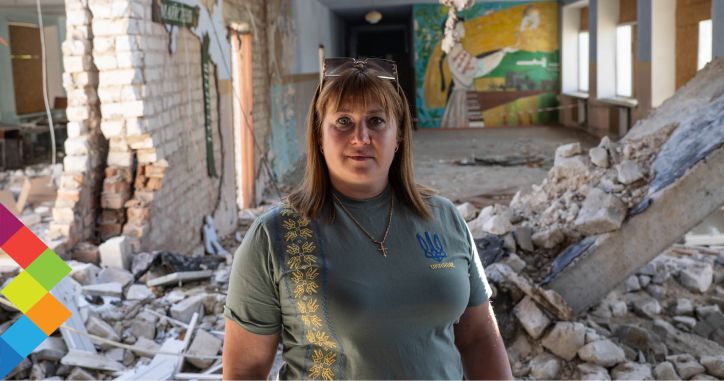Teaching students with Special Education Needs: Takeaways from TALIS 2024
Sign up
Sign up for the Worlds of Education newsletter.
Sign up
Sign up for the Worlds of Education newsletter.
Thank you for subscribing
Something went wrong
Classrooms are becoming more diverse, and more students around the world have identified special education needs (SEN). But it is relatively common for schools to be affected by a shortage of teachers with competences to teach students with SEN. Across the OECD, one in three teachers works in a school where such shortages are an issue.
The Teaching and Learning International Survey (TALIS) 2024 collects data on how teachers are trained and what teachers are doing to adapt their teaching for students with SEN, providing insights on where teachers could be further supported to provide inclusive learning.
More teachers are working with students with formally identified SEN
In most education systems, teachers are more likely to work in schools where at least 10% of students have formally identified SEN than in 2018. On average, there was a 15-percentage-point increase in the share of teachers working in such schools. Increases exceeded 25 percentage points in Australia*, the French Community of Belgium, Estonia, France, Italy, the Netherlands*, New Zealand*, and the Slovak Republic.
Teachers often lack confidence in their capacity to implement inclusive practices for students with SEN
Rising formal recognition of SEN in the classroom may entail changes to the demands on teachers, for example to comply with related school policies and act upon students’ individual education plans. TALIS asks teachers about the extent to which they feel confident implementing six specific inclusive practices to support students with SEN, namely:
- Working jointly with other professionals and staff (like aides) to teach students with SEN in the classroom (reported as a practice they could do “quite a bit” or “a lot” by 72% of teachers on average);
- Designing learning tasks to accommodate students with SEN (reported by 62% of teachers);
- Collaborating with other professionals in designing educational plans for students with SEN (reported by 60% of teachers);
- Getting parents/guardians involved in school activities of their children with SEN (reported by 46% of teachers);
- Adapting standardised assessments so that all students with SEN can be assessed (reported by 43% of teachers);
- Informing others about laws and policies relating to the inclusion of students with SEN (reported by 40% of teachers).
However, these figures should give pause for thought for policymakers in most education systems. For starters, why are so few teachers confident in their capacity to inform others about laws and policies related to SEN and inclusion? How impactful can these laws and policies be on inclusive practices if teachers do not feel sufficiently informed about them? How can teachers know if their practices to support students with SEN are having an impact if they are not confident in their capacity to adapt assessments for these students?
Access to professional learning in SEN is increasing – but important gaps remain
Professional learning is an important lever to support teachers in developing inclusive practices for students with SEN. Given that more teachers are working with students with SEN, it is reassuring to see that participation in related professional learning has significantly increased in recent years in three-quarters of education systems. For the most part, the professional development on offer seems to be meeting the needs of teachers in working with SEN.
However, nearly a quarter of teachers feel that they are highly in need of more professional learning in teaching students with SEN. In a few countries, access to such support is a concern. In Brazil, Colombia, Costa Rica, Morocco, Romania and South Africa, more than 20% of teachers have high needs for professional learning in SEN but did not recently participate in related activities. For these countries, it is a priority to review what barriers exist for teachers in reaching this kind of support.
In some education systems, there are many teachers who feel that they have a high level of need for professional learning in teaching students with SEN although they have recently participated in related training. More than a quarter of teachers are in this situation in Brazil, Costa Rica, Japan, Kazakhstan, Lithuania, Shanghai (China), and Viet Nam. In these cases, we can ask whether opportunities for development are matched to teachers' needs.
It may be that teachers are accessing appropriate support but require more of this (as well as time and practice) to become more confident in their capacity to implement inclusive practices. However, it is also possible that the content, format, or quality of professional learning is not sufficiently tailored to teachers’ needs. For many education systems, the data on teachers’ self-efficacy in inclusive practices for students with SEN suggests that there is room for improvement in professional development regarding communication about laws and policies regarding the inclusion of students with SEN and the adaptation of assessments.
Although the majority of teachers' needs seem to be largely met by the offering of professional development in SEN, TALIS data highlight the need to keep a close eye on the availability and impact of support for teachers. From an equity perspective, meeting the needs of most teachers is not enough. Education systems need to ensure that every teacher is fully prepared to support all of their students, including those with SEN.
Are teachers using digital resources and tools—including AI—to provide tailored support?
Digital resources and tools can provide teachers with interesting options for adaptive teaching. The advent of AI in particular could mean that teachers find it easier and faster to create inclusive learning environments, although it may also pose challenges from an equity perspective, for example by reinforcing existing biases or creating new barriers. For now, the share of teachers saying that they have used AI to support students with SEN is quite small (35% on average, of the 36% who report using AI at all).
In over a third of education systems, teachers are more likely to turn to digital resources and tools to provide individualised instruction and assessment when over 30% of their class have SEN. For the majority of participating education systems, however, there is no significant relationship between teachers’ use of these digital resources and the share of students who have SEN in their class.
The bottom line
In general, TALIS 2024 shows that more teachers are being trained in SEN, which is reassuring given that more teachers are faced with formally identified SEN in the classroom. However, many teachers lack confidence in a range of inclusive practices to support students with SEN. Education systems still need to work on making professional development in this area both more available and more impactful. These investments will be essential to ensure that all students’ needs can be accommodated, using a variety of tools.
Note: statistics in this article refer to lower secondary teachers.
* Estimates should be interpreted with caution due to higher risk of non-response bias.
The opinions expressed in this blog are those of the author and do not necessarily reflect any official policies or positions of Education International.




